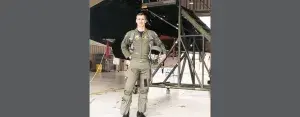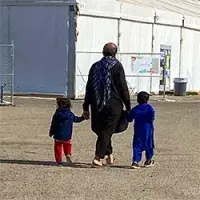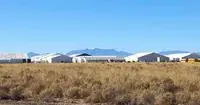
Editor’s Note: Below is a first-hand account written by LaGuardia Airport deputy federal security director Matt McKeon. He writes about his experiences as the federal coordinator for Operation Allies Welcome at Holloman Air Force Base in Alamogordo, New Mexico, the same base where he learned of 9/11 20 years earlier.
On October 19, 2021, I received notice that I was needed for a detail at Holloman Air Force Base in southern New Mexico to assume duties of the federal coordinator for Operation Allies Welcome on the base. As the lead federal agency for OAW, the Department of Homeland Security is tasked with coordinating the resettlement of tens of thousands of Afghans who were evacuated from their country by the United States.
Their journey to this country was long and treacherous and one that clearly took a toll, but the Afghan people are stunningly resilient and grateful. They patiently await their turn to board the bus that will take them to their new home in America, with the hope and promise of a better life than the one they left behind in their native land. Many have already resettled in towns across the U.S., while others anxiously await their trip from one of the safe havens the Unified Coordination Group oversees.
The job of a federal coordinator is principally to ensure effective collaboration and cooperation between the three government departments spearheading the operation: DHS, the Department of State, and the Department of Defense. OAW is a historic undertaking in its size, scope, and speed.
The OAW mission here at Holloman AFB is simple: ensure the successful resettlement of each Afghan guest – the term we use for refugees moving to the U.S. – under our care. Accomplishing the mission, however, is anything but easy. Success or failure hinges not only upon well-established procedures and protocols, but also on leadership, talent, and a burning desire to make a difference.
Federal employees, airmen, soldiers, Coast Guardsmen, non-governmental employees, volunteers, and contractors collectively make the difference each day and make each day better for our Afghan community. It is inspiring, rewarding, and humbling to watch them perform their duties and interact with our guest population.
A few weeks ago, I was on an early morning drive from the Afghan village at Holloman AFB known as Aman Omid to our interagency office on the main part of the base. Twenty-five Afghan guests were scheduled to depart that morning, and as is our custom, we were there to bid them farewell. Guest departures are in many ways a bittersweet moment for our workforce, who have invested large amounts of emotional equity in the guests and over time have developed strong personal bonds – yet it is the reason we are here.
As the sun was cresting the mountains to the east on that autumn morning drive back to the office, I glanced across the runways and taxiways of an airfield I literally knew like the back of my hand. I am no stranger to Holloman AFB, having served three active duty assignments at the base for a total of almost 10 years. It was at that moment when a strong sense of deja vu struck me, and I pulled the car over to collect my thoughts.
Just over 20 years ago – on September 11, 2001 – I was sitting in the cockpit of an F-117A Stealth Fighter in the arming area of Runway 25, which was literally 50 yards from where I pulled off the road. The time on that Tuesday morning was identical – 6:50 a.m. That morning on 9/11, I led the squadron on a two-hour training mission around southern New Mexico.
Ten of us were in the group. I remember very clearly the crew chief plugging his headset into my jet so his team could arm the aircraft and check for leaks or anomalies. He was the one who first alerted me to the tragic events unfolding in New York City that day. I learned about the other two attacks – the plane that hit the Pentagon and the one that crashed in Shanksville, Pennsylvania – later at a battle staff meeting when we all got together as a wing leadership team.
We all launched that morning into a bright blue New Mexico morning sky, only to be turned around by the Albuquerque Air Traffic Control Center 30 minutes later when the Federal Aviation Administration cleared the nation’s airspace of all aircraft – something that had never been done. As a brand new squadron commander, it was now going to be my job to get the 8th Fighter Squadron “Black Sheep” ready to face the enemy, which we did over the skies of Iraq 18 months later.
9/11 marked the beginning of America’s war on terrorism and represented the opening chapter in America’s 20-year conflict in Afghanistan. Today, I find myself back at Holloman AFB – 20 years later – helping to write the final chapter in America’s longest war by overseeing a village of Afghan evacuees who patiently wait a few hundred yards from where it all started for me on that tragic Tuesday in 2001. It is, in a word, surreal. Life has certainly come full circle.
By Matt McKeon, Deputy Federal Security Director, LaGuardia Airport


